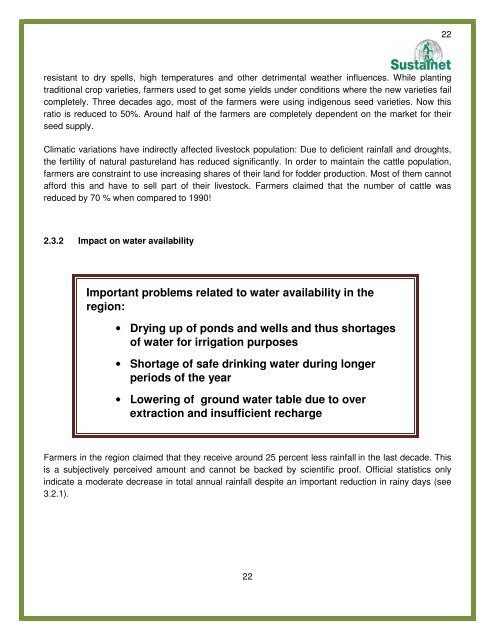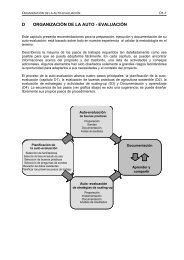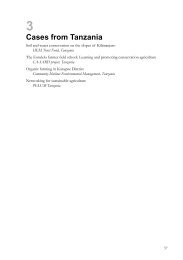Adaptation of small scale farmers to climatic risks in India - Sustainet
Adaptation of small scale farmers to climatic risks in India - Sustainet
Adaptation of small scale farmers to climatic risks in India - Sustainet
Create successful ePaper yourself
Turn your PDF publications into a flip-book with our unique Google optimized e-Paper software.
esistant <strong>to</strong> dry spells, high temperatures and other detrimental weather <strong>in</strong>fluences. While plant<strong>in</strong>g<br />
traditional crop varieties, <strong>farmers</strong> used <strong>to</strong> get some yields under conditions where the new varieties fail<br />
completely. Three decades ago, most <strong>of</strong> the <strong>farmers</strong> were us<strong>in</strong>g <strong>in</strong>digenous seed varieties. Now this<br />
ratio is reduced <strong>to</strong> 50%. Around half <strong>of</strong> the <strong>farmers</strong> are completely dependent on the market for their<br />
seed supply.<br />
Climatic variations have <strong>in</strong>directly affected lives<strong>to</strong>ck population: Due <strong>to</strong> deficient ra<strong>in</strong>fall and droughts,<br />
the fertility <strong>of</strong> natural pastureland has reduced significantly. In order <strong>to</strong> ma<strong>in</strong>ta<strong>in</strong> the cattle population,<br />
<strong>farmers</strong> are constra<strong>in</strong>t <strong>to</strong> use <strong>in</strong>creas<strong>in</strong>g shares <strong>of</strong> their land for fodder production. Most <strong>of</strong> them cannot<br />
afford this and have <strong>to</strong> sell part <strong>of</strong> their lives<strong>to</strong>ck. Farmers claimed that the number <strong>of</strong> cattle was<br />
reduced by 70 % when compared <strong>to</strong> 1990!<br />
2.3.2 Impact on water availability<br />
Important problems related <strong>to</strong> water availability <strong>in</strong> the<br />
region:<br />
• Dry<strong>in</strong>g up <strong>of</strong> ponds and wells and thus shortages<br />
<strong>of</strong> water for irrigation purposes<br />
• Shortage <strong>of</strong> safe dr<strong>in</strong>k<strong>in</strong>g water dur<strong>in</strong>g longer<br />
periods <strong>of</strong> the year<br />
• Lower<strong>in</strong>g <strong>of</strong> ground water table due <strong>to</strong> over<br />
extraction and <strong>in</strong>sufficient recharge<br />
Farmers <strong>in</strong> the region claimed that they receive around 25 percent less ra<strong>in</strong>fall <strong>in</strong> the last decade. This<br />
is a subjectively perceived amount and cannot be backed by scientific pro<strong>of</strong>. Official statistics only<br />
<strong>in</strong>dicate a moderate decrease <strong>in</strong> <strong>to</strong>tal annual ra<strong>in</strong>fall despite an important reduction <strong>in</strong> ra<strong>in</strong>y days (see<br />
3.2.1).<br />
22<br />
22




